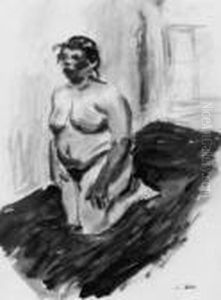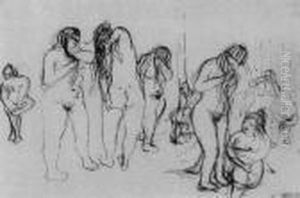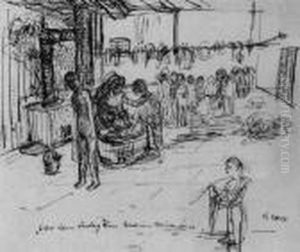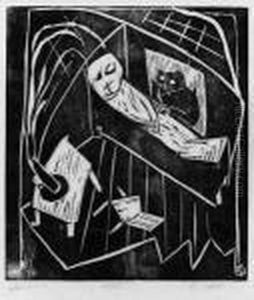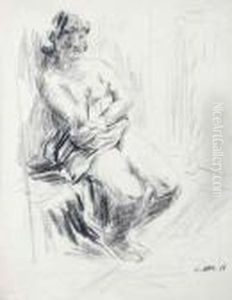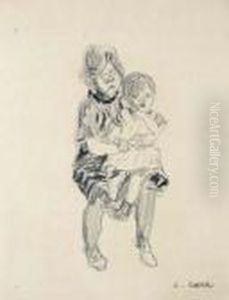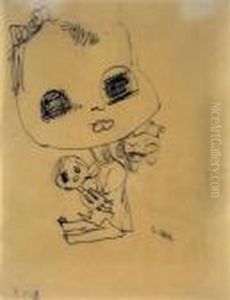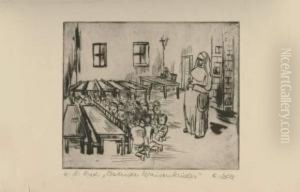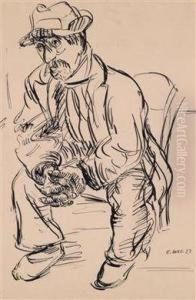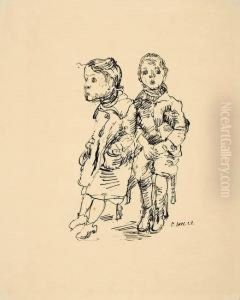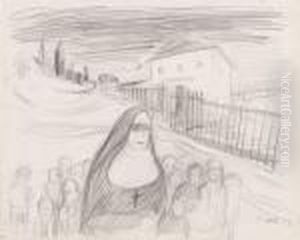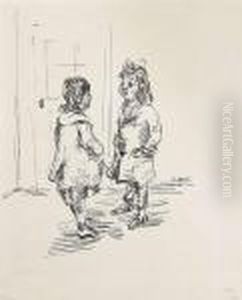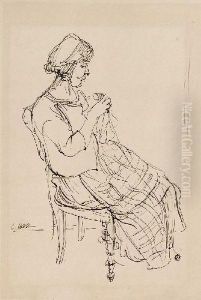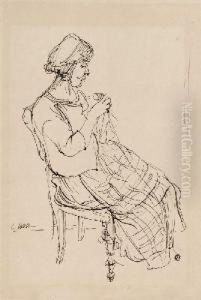Christoph Voll Paintings
Christoph Voll was a significant figure in the German art scene during the early 20th century, known for his contributions to the expressionist and new objectivity movements. Born on November 27, 1897, in Offenbach am Main, Germany, Voll was part of a generation of artists who were deeply affected by the experiences of World War I and the tumultuous political and social changes in Germany during the Weimar Republic era. His work is characterized by a strong emphasis on social critique, often focusing on the struggles of the working class and the human condition.
Voll received his artistic training at the School of Applied Arts in Frankfurt and later at the Dresden Academy of Fine Arts, where he was influenced by the works of Otto Dix and George Grosz, prominent figures in the new objectivity movement that emerged as a reaction against the emotional intensity of expressionism. This movement sought to portray the realities of the modern world with a sense of detachment and objectivity, often highlighting the harshness and absurdities of life in post-war Germany.
Throughout his career, Christoph Voll experimented with various mediums, including sculpture, printmaking, and drawing. His sculptures, often made of wood or stone, are notable for their simplified forms and expressive features, reflecting the influence of primitive art as well as the avant-garde movements of his time. Voll's prints and drawings, on the other hand, demonstrate a keen observation of everyday life and social injustices, rendered with a sharp, satirical edge.
Voll was an active participant in the artistic community, becoming a member of the Dresden Secession Group 1919 and later associating with the Berlin Secession. His work was included in several important exhibitions, including the first exhibition of the New Objectivity at the Mannheim Kunsthalle in 1925, which helped to define the movement and establish Voll as a key figure within it.
Unfortunately, Christoph Voll's career was cut short by his untimely death on September 9, 1939, just as World War II began. Despite his early death, Voll's work remains a poignant reflection of the interwar period in Germany, offering insight into the social and political challenges of his time. His contributions to German art, particularly within the realms of expressionism and new objectivity, continue to be celebrated for their critical engagement with the world around him and their innovative approach to form and subject matter.
